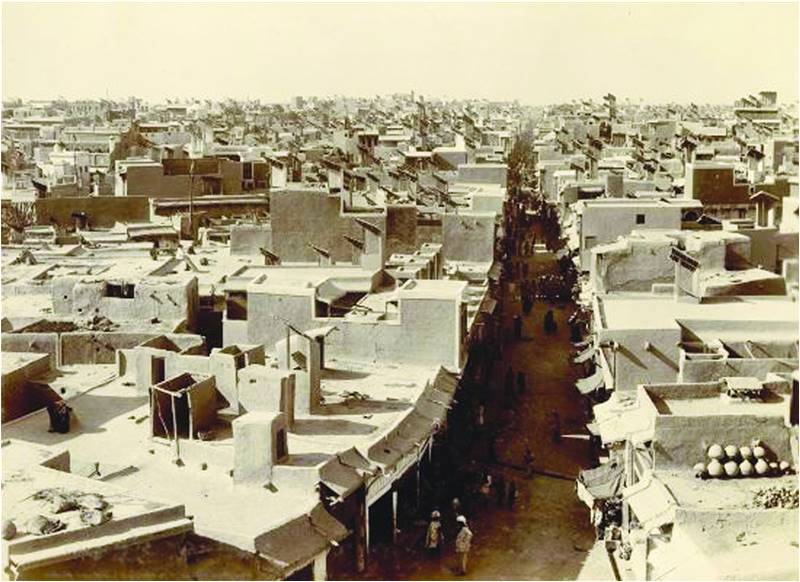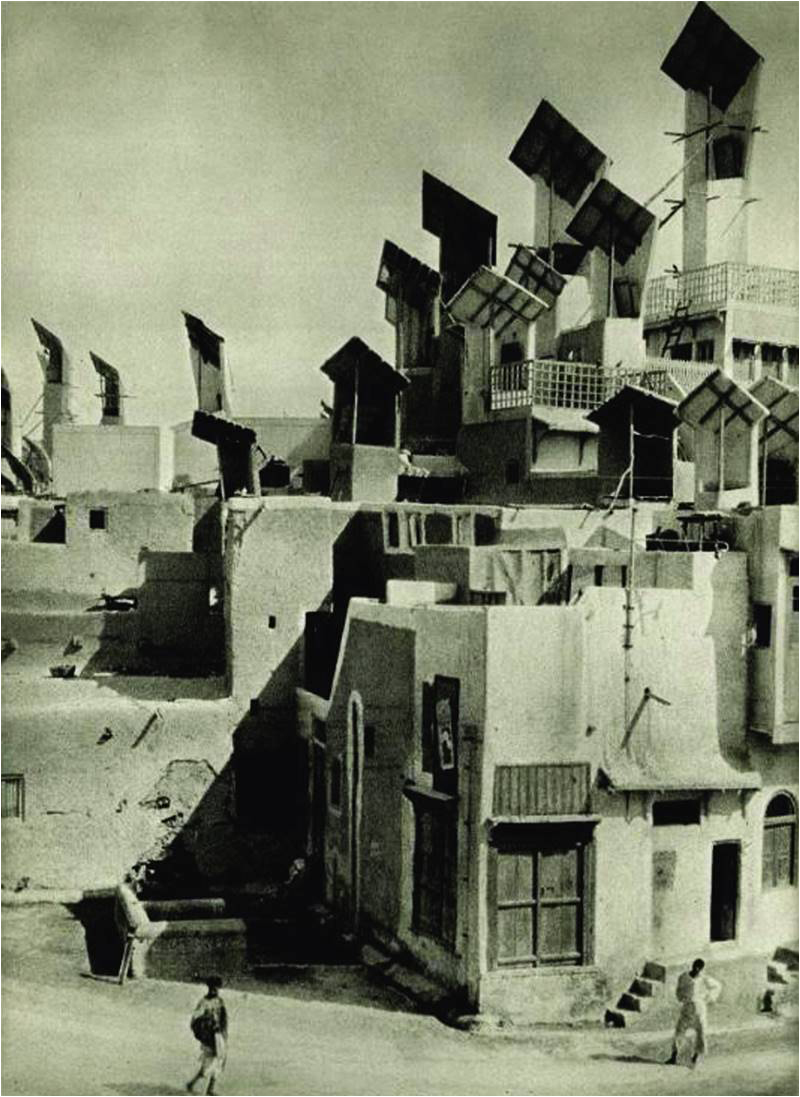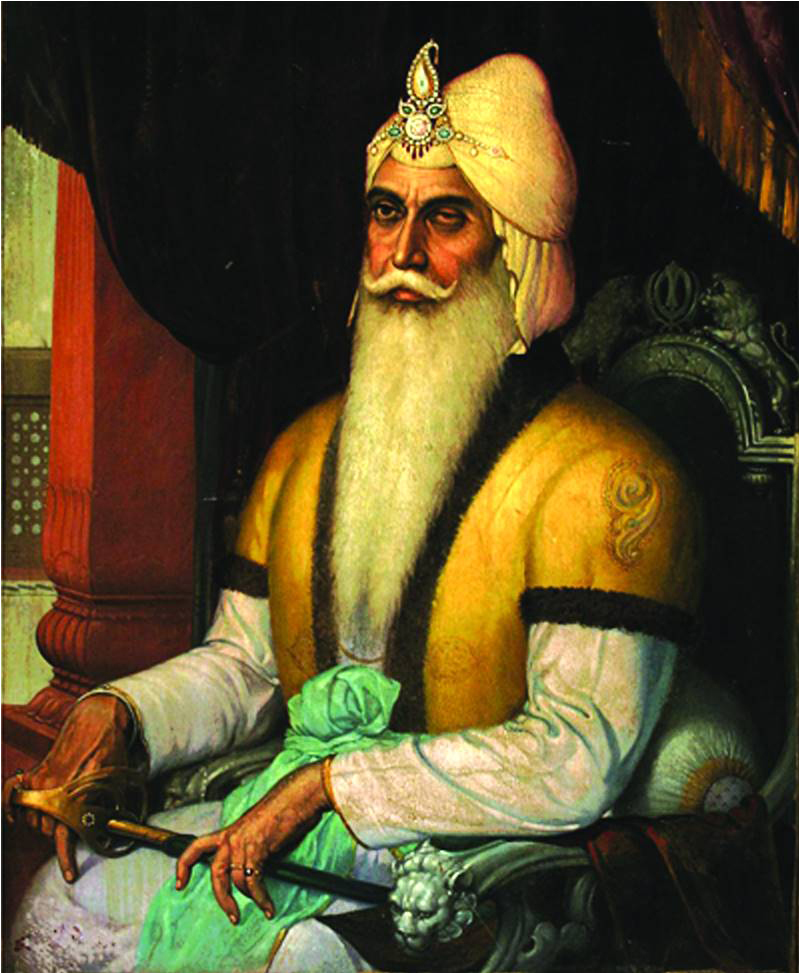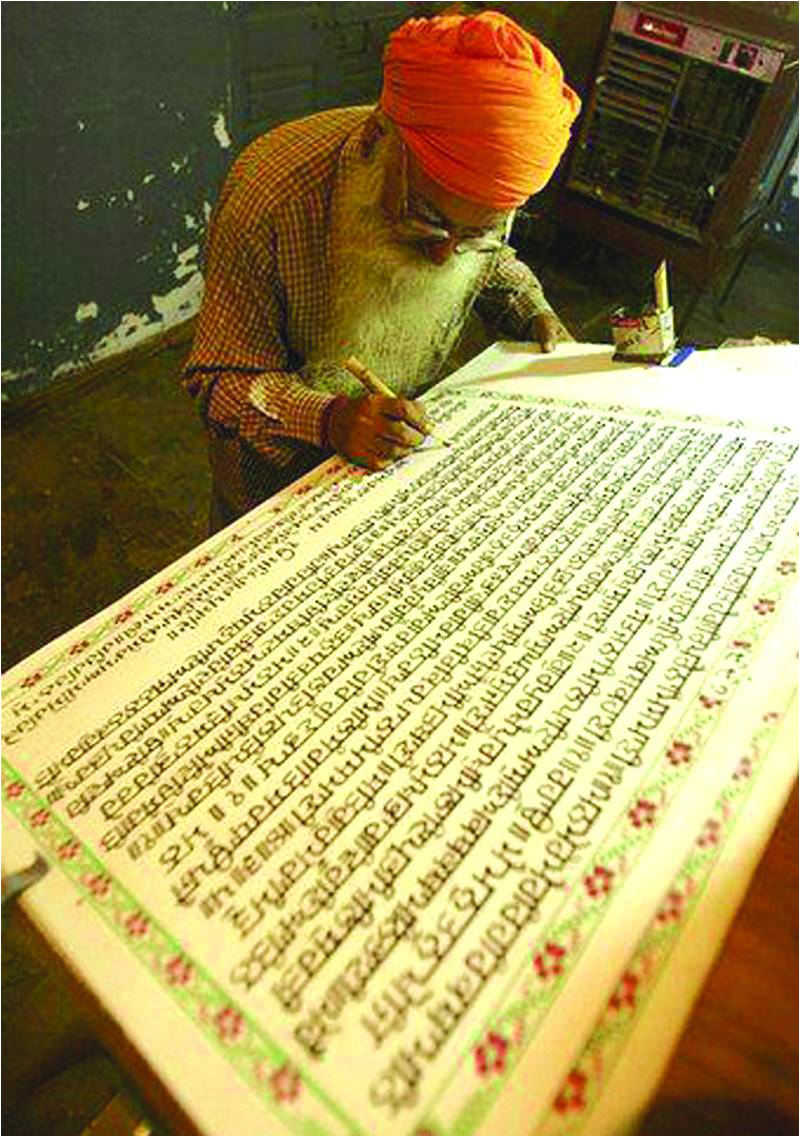
Hyderabad city stands on the northern part of Ganju Takar (Ganja Hill) range, which resembles a quadrilateral shape – its lowest ridge touches the Duabo (a natural depression which exists in between the Fuleli canal and Indus River). Ghulam Shah Kalhoro, who ruled Sindh from 1757 till his death in 1772, founded the city in 1768 AD.
Historically, Hyderabad city, under the Talpur dynasty’s rule, was the capital of Sindh. This was the case from 1783 till Charles Napier conquered it in 1843 for the British. Over a period, it has positioned itself as the leading cultural centre of Sindh. It retained that status till Karachi became a new capital.
Hyderabad’s pluralism has always lent itself to religious diversity. In the early stages of the Talpur dynasty, Sindhi Hindus’ places of worship along with Mandar (temples), also took the form of Kutia, Thalho, Thalhee, Ashram, Samadhi, Darbar, Khatt, Asthan and Akal Bhoongo. Apart form the Mandars, all of them had an affinity towards Sikhism. This is evident from how these spaces of worship venerate the Granth Sahib (Sikh scripture).
In Hyderabad, there were two Akal Bhoongos to be found. One was Akal Bhoongo Bhai Gola Singh, which was established in 1866. However, an older one was commonly known as Qandhrani Khalsa Akal Bhoongo. In fact, in the Talpurs era, a person named Adomal migrated from Punjab and settled in the West Kacha Area, near the old Church, Hyderabad. He was a follower of the Sikh Mat. Later, Adomal’s grandson Qandharimal became well-known, and Adwani’s lineage became known as Qandhari or Qandhari Khalsa.
Akal Bhoongo’s foundation story reveals a fascinating connection with Maharaja Ranjit Singh.
We find that Diwan Manik Singh, a young man of the Qandhari A’kah (family), along with his close associates, went to Lahore and met with Ranjit Singh. He stayed there for a considerable time. And it was Ranjit Singh’s endorsement that brought the Guru Granth Sahib to Hyderabad. Well-known author Kewalram Ratanmal Malkani also endorses this account. He writes in his book entitled The Story of Sindh, “Maharaja Ranjit Singh sent one Manik Singh with a copy of Guru Granth Saheb on elephant-back to be installed in Hyderabad.”

The Qandhrani Khalsa requested the Talpur Mirs for land for the Akal Bhoongo, which was granted. It was spread over ten thousand feet. Initially, a Kacha Otaq type structure was erected, where religious sittings and rituals happened. The allotted land existed near the mosque. One day, a few mullahs of the locality complained to the ruling Mirs that Akal Bhoongo’s devotional Sangeet (hymns) were interfering with their prayers. Thus, it was ordered to demolish the Akal Bhoongo.
Wasting no time, Manik Singh met with the Mir. He pleaded that the Khalsas were indebted for the sanctioned land, but that the demolition order had hurt them. Therefore, he informed the rulers, it had been resolved that they would not fight with their Muslim brothers, but to protect the Akal Bhoongo they were “ready to embrace martyrdom”. He politely intimated the Mir that news of this demolition will not be well received in Punjab. Perhaps, he warned, Maharaja Ranjit Singh might take it as an insult, because he was the one who had encouraged the establishment of the Bhoongo in Hyderabad.

The Mir listened to Mannik Singh carefully, but it was difficult for him to decide. Finally, the Mir called the Muslims and asked them to reserve the mosque for females and construct a new one for males. The Muslims obliged.
In Punjab, the “military-Sikhism-revival” phenomenon gave rise to or maintained a Sikh identity. However, in Sindh, the case was quite different. Even in the Indian Census of 1891, there was a Sikh column in the form provided by the authorities, but Hyderabadi Sikhs registered themselves as Hindus. Nanadiram and Shaukiram, two notables of Hyderabad, played the leading role in this.
Nevertheless, in Sindh, two factors popularized Sikhism. One was a rumour in the last days of the Mirs that sooner or later Sindh would become part of the Sikh Empire. The second phenomenon is related to arrival of the British. After 1843, Shikarpur, Karachi and Hyderabad were made collectorates. Captain A. B. Rathbourne was made the East India Company’s Collector for Hyderabad, which was spread over 30,000 square miles. Thus, the revenue administration needed 13 Mukhtiarkars to cover the collectorate. Captain A.B Rathbourne was impressed by the Qandhrani Khalsas, so he filled 11 Mukhtiarkari posts from amongst them. Diwan Mannik Singh, Diwan Chartsingh, Diwan Gurdas Singh and Diwan Atma Singh were among the appointees. This move created a soft corner among Hyderabadi Amils and Bhaibands for the Sikh Mat – and most of them aspired to join the Khalsa.
Richard Burton noted that in Sindh, the Sikh and Hindu practices become an eclectic mix. Thus, he called them “Heterodox Sikhs” in his book Sindh & the Races that Inhabit the Valley of the Indus.

In a conversation, Dr. Shankar Lohano comments that Sindhi Sikhs historically neither endorsed the strict discipline of the Gurdwara, nor culturally practiced the Five Ks (Kesh, Kangha, Kara, Kachha and Kirpan). It happened so, according to him, because Sindhi Sikhs of the city opted for the Persian language instead of Gurmukhi, and later the Sindhi language, for the expression of culture and art and Sansikarat for their religion and spirituality. Gradually, they loosened the cultural linkages with Amritsar, Punjab (now in India). “Another consideration”, elaborates Taj Joyo (writer and Sindhologist), “might have been political”. The Talpur - Ranjit Singh - British contradiction might have induced Sindhi Sikhs to explore a politically acceptable path.
In 1855, the Qandharani Khalsa decided to construct “pakka” Bhoongo with kiln bricks. However, their love of the Guru Granth Sahib compelled them to participate in the labour. Thus, people like Chohar Singh (retired Deputy Collector of those times) and Diwan Dharam Singh worked as labourers, and at the end of the day took Char Anna (One-fourth of a Rupee) as remuneration – and then donated these earnings. Some of the Khalsa contributed in kind and brought wood and bricks. Chartsingh Khalsa and Taloksingh Khasla supervised the work. It continued till 1858. Chartsingh managed the affairs till his death in 1872. Soon, the Qandhrani community selected Manik Singh to take charge of the Bhoongo. He devoted his whole life to the service of Akal Bhoongo. He was punctual in Bbanni (Gurubbanni or Gurbani) and Katha (a verbal discourse of Gurbani and the history). He also elaborated Dharam (understanding of ones’ virtues and duties), Arath (assets and money is not a spiritual treasure), Kama (desires get fulfilled, including marriage and children) and Moksha (freedom from life-and-death cycles) to followers. At that time, Nahansingh Khalsa also joined the Bhoongo - and he became popular amongst Sikh Sepoys who were stationed in Sindh.
After the death of Manik Singh, the responsibility for Akal Bhoongo’s affairs shifted to his elder son Tegh Singh, who at those times was the Station Master at Larkana Railway Station. And he handed over the responsibility to his brother Mahekum Singh.
Later in 1901, a dispute about the ownership of Akal Bhoongo arose among the Qandhrani Khalsa cousins. One party lodged a civil case which continued till 1905, and Akal Bhoongo remained closed. Finally, the court decree came out, and it stated that Ak’al Bhoongo is the collective property of Qandhrani Khalsas. Thus, none of the individuals have possession rights. As a result, a managing committee from the Qandhrani Khalsa was constituted to take care of Akal Bhoongo’s affairs. Its services continued till the 1947 Partition.
Sadly, like other parts of India, Partition also affected Hyderabad adversely. Soon it became the city of hovels and huts - consequently there was dirt, lack of sanitation and crowding everywhere. G. Swayne Thomas, author of Hyderabad’s first Master Plan (1953-54), wrote that at one point in time Hyderabad was known as the Paris of Sind or India, and its houses were practically palaces – and now these became mere evacuee properties.
Historically, Hyderabad city, under the Talpur dynasty’s rule, was the capital of Sindh. This was the case from 1783 till Charles Napier conquered it in 1843 for the British. Over a period, it has positioned itself as the leading cultural centre of Sindh. It retained that status till Karachi became a new capital.
Hyderabad’s pluralism has always lent itself to religious diversity. In the early stages of the Talpur dynasty, Sindhi Hindus’ places of worship along with Mandar (temples), also took the form of Kutia, Thalho, Thalhee, Ashram, Samadhi, Darbar, Khatt, Asthan and Akal Bhoongo. Apart form the Mandars, all of them had an affinity towards Sikhism. This is evident from how these spaces of worship venerate the Granth Sahib (Sikh scripture).
In Punjab, the “military-Sikhism-revival” phenomenon gave rise to or maintained a Sikh identity. However, in Sindh, the case was quite different
In Hyderabad, there were two Akal Bhoongos to be found. One was Akal Bhoongo Bhai Gola Singh, which was established in 1866. However, an older one was commonly known as Qandhrani Khalsa Akal Bhoongo. In fact, in the Talpurs era, a person named Adomal migrated from Punjab and settled in the West Kacha Area, near the old Church, Hyderabad. He was a follower of the Sikh Mat. Later, Adomal’s grandson Qandharimal became well-known, and Adwani’s lineage became known as Qandhari or Qandhari Khalsa.
Akal Bhoongo’s foundation story reveals a fascinating connection with Maharaja Ranjit Singh.
We find that Diwan Manik Singh, a young man of the Qandhari A’kah (family), along with his close associates, went to Lahore and met with Ranjit Singh. He stayed there for a considerable time. And it was Ranjit Singh’s endorsement that brought the Guru Granth Sahib to Hyderabad. Well-known author Kewalram Ratanmal Malkani also endorses this account. He writes in his book entitled The Story of Sindh, “Maharaja Ranjit Singh sent one Manik Singh with a copy of Guru Granth Saheb on elephant-back to be installed in Hyderabad.”

The Qandhrani Khalsa requested the Talpur Mirs for land for the Akal Bhoongo, which was granted. It was spread over ten thousand feet. Initially, a Kacha Otaq type structure was erected, where religious sittings and rituals happened. The allotted land existed near the mosque. One day, a few mullahs of the locality complained to the ruling Mirs that Akal Bhoongo’s devotional Sangeet (hymns) were interfering with their prayers. Thus, it was ordered to demolish the Akal Bhoongo.
Wasting no time, Manik Singh met with the Mir. He pleaded that the Khalsas were indebted for the sanctioned land, but that the demolition order had hurt them. Therefore, he informed the rulers, it had been resolved that they would not fight with their Muslim brothers, but to protect the Akal Bhoongo they were “ready to embrace martyrdom”. He politely intimated the Mir that news of this demolition will not be well received in Punjab. Perhaps, he warned, Maharaja Ranjit Singh might take it as an insult, because he was the one who had encouraged the establishment of the Bhoongo in Hyderabad.

The Mir listened to Mannik Singh carefully, but it was difficult for him to decide. Finally, the Mir called the Muslims and asked them to reserve the mosque for females and construct a new one for males. The Muslims obliged.
In Punjab, the “military-Sikhism-revival” phenomenon gave rise to or maintained a Sikh identity. However, in Sindh, the case was quite different. Even in the Indian Census of 1891, there was a Sikh column in the form provided by the authorities, but Hyderabadi Sikhs registered themselves as Hindus. Nanadiram and Shaukiram, two notables of Hyderabad, played the leading role in this.
Nevertheless, in Sindh, two factors popularized Sikhism. One was a rumour in the last days of the Mirs that sooner or later Sindh would become part of the Sikh Empire. The second phenomenon is related to arrival of the British. After 1843, Shikarpur, Karachi and Hyderabad were made collectorates. Captain A. B. Rathbourne was made the East India Company’s Collector for Hyderabad, which was spread over 30,000 square miles. Thus, the revenue administration needed 13 Mukhtiarkars to cover the collectorate. Captain A.B Rathbourne was impressed by the Qandhrani Khalsas, so he filled 11 Mukhtiarkari posts from amongst them. Diwan Mannik Singh, Diwan Chartsingh, Diwan Gurdas Singh and Diwan Atma Singh were among the appointees. This move created a soft corner among Hyderabadi Amils and Bhaibands for the Sikh Mat – and most of them aspired to join the Khalsa.
Richard Burton noted that in Sindh, the Sikh and Hindu practices become an eclectic mix. Thus, he called them “Heterodox Sikhs” in his book Sindh & the Races that Inhabit the Valley of the Indus.

In a conversation, Dr. Shankar Lohano comments that Sindhi Sikhs historically neither endorsed the strict discipline of the Gurdwara, nor culturally practiced the Five Ks (Kesh, Kangha, Kara, Kachha and Kirpan). It happened so, according to him, because Sindhi Sikhs of the city opted for the Persian language instead of Gurmukhi, and later the Sindhi language, for the expression of culture and art and Sansikarat for their religion and spirituality. Gradually, they loosened the cultural linkages with Amritsar, Punjab (now in India). “Another consideration”, elaborates Taj Joyo (writer and Sindhologist), “might have been political”. The Talpur - Ranjit Singh - British contradiction might have induced Sindhi Sikhs to explore a politically acceptable path.
In 1855, the Qandharani Khalsa decided to construct “pakka” Bhoongo with kiln bricks. However, their love of the Guru Granth Sahib compelled them to participate in the labour. Thus, people like Chohar Singh (retired Deputy Collector of those times) and Diwan Dharam Singh worked as labourers, and at the end of the day took Char Anna (One-fourth of a Rupee) as remuneration – and then donated these earnings. Some of the Khalsa contributed in kind and brought wood and bricks. Chartsingh Khalsa and Taloksingh Khasla supervised the work. It continued till 1858. Chartsingh managed the affairs till his death in 1872. Soon, the Qandhrani community selected Manik Singh to take charge of the Bhoongo. He devoted his whole life to the service of Akal Bhoongo. He was punctual in Bbanni (Gurubbanni or Gurbani) and Katha (a verbal discourse of Gurbani and the history). He also elaborated Dharam (understanding of ones’ virtues and duties), Arath (assets and money is not a spiritual treasure), Kama (desires get fulfilled, including marriage and children) and Moksha (freedom from life-and-death cycles) to followers. At that time, Nahansingh Khalsa also joined the Bhoongo - and he became popular amongst Sikh Sepoys who were stationed in Sindh.
After the death of Manik Singh, the responsibility for Akal Bhoongo’s affairs shifted to his elder son Tegh Singh, who at those times was the Station Master at Larkana Railway Station. And he handed over the responsibility to his brother Mahekum Singh.
Later in 1901, a dispute about the ownership of Akal Bhoongo arose among the Qandhrani Khalsa cousins. One party lodged a civil case which continued till 1905, and Akal Bhoongo remained closed. Finally, the court decree came out, and it stated that Ak’al Bhoongo is the collective property of Qandhrani Khalsas. Thus, none of the individuals have possession rights. As a result, a managing committee from the Qandhrani Khalsa was constituted to take care of Akal Bhoongo’s affairs. Its services continued till the 1947 Partition.
Sadly, like other parts of India, Partition also affected Hyderabad adversely. Soon it became the city of hovels and huts - consequently there was dirt, lack of sanitation and crowding everywhere. G. Swayne Thomas, author of Hyderabad’s first Master Plan (1953-54), wrote that at one point in time Hyderabad was known as the Paris of Sind or India, and its houses were practically palaces – and now these became mere evacuee properties.

